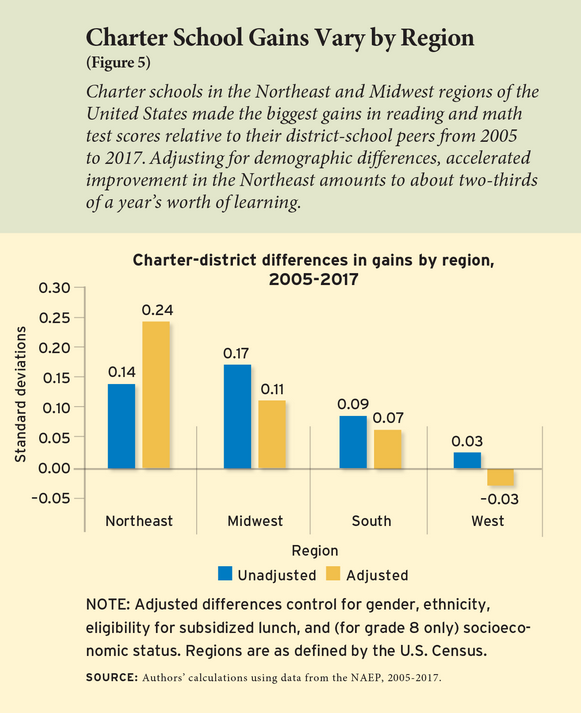Must-read research from Harvard University:
Our analysis shows that student cohorts in the charter sector made greater gains from 2005 to 2017 than did cohorts in the district sector. The difference in the trends in the two sectors amounts to nearly an additional half-year’s worth of learning. The biggest gains are for African Americans and for students of low socioeconomic status attending charter schools. When we adjust for changes in student background characteristics, we find that two-thirds of the relative gain in the charter sector cannot be explained by demography. In other words, the pace of change is more rapid either because the charter sector, relative to the district sector, is attracting a more proficient set of students in ways that cannot be detected by demographic characteristics, or because charter schools and their teachers are doing a better job of teaching students.
That said, students in the South did not fare as well as students in other regions. The authors write, “In the South, after adjusting for student characteristics, average scores at district schools improve by 0.19 standard deviations for the two subjects at both grade levels. At charters, average scores improve by 0.25 standard deviations, a charter-district differential of 0.06 standard deviations.”



